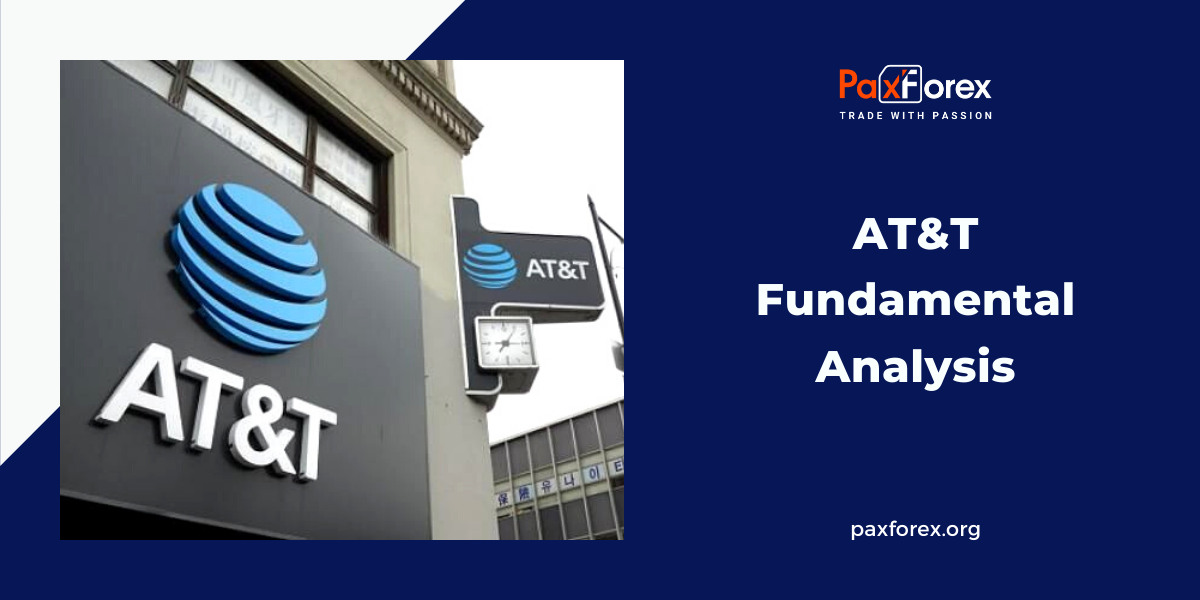
Source: PaxForex Premium Analytics Portal, Fundamental Insight
Each investor is guided by unique timelines and objectives, shaping their portfolio composition in alignment with these aspirations. While dividends might hold little appeal for some, they hold significant value for others, even if it entails sacrificing certain market gains. This distinction is particularly evident in the case of AT&T investors, who are presented with an enticing 7.9% yield, ranking among the market's finest.
Curious about whether AT&T stock should be a part of your portfolio? Delve into the following insights to explore two compelling reasons that might steer you toward it, as well as one critical consideration that may advise against it.
- Robust and Reliable Yield
AT&T, standing as the largest telecommunications provider in the United States, finds itself positioned within an industry that has evolved into a utility-like status. With phones becoming an essential fixture in almost everyone's lives, the consistent payment of telecom bills remains a steadfast practice, irrespective of employment fluctuations.
This dependable cash flow forms the bedrock upon which AT&T can offer an above-average dividend yield. The company's management enjoys substantial visibility into its upcoming quarters due to this consistent revenue stream. However, a prevailing notion in the investment world suggests that once a dividend yield surpasses the range of 4% to 6%, skepticism arises about the company's health and the sustainability of the yield. Yet, in AT&T's case, with its nearly 8% yield, this assumption doesn't hold true.
The dividend payout ratio emerges as the yardstick to gauge the safety of a dividend. It involves dividing the sum paid out to investors by an earnings metric, such as earnings per share (EPS) or free cash flow (FCF). This percentage quantifies the portion of a company's earnings dedicated to dividend disbursement. Generally, a ratio below 50% is considered safe for regular companies, while utility companies typically maintain ratios between 70% to 80%.
Upon examining AT&T's performance during the second quarter, the payout ratios reveal a commendable degree of security.
Given the evident stability of AT&T's dividend, one might ponder the rationale behind the elevated yield.
- Favorable Valuation
In a landscape where various assets, such as bank accounts and Treasuries, offer yields, investors have diversified their pursuit of yield away from riskier assets like stocks. Consequently, companies like AT&T, traditionally acquired for their yields, have encountered relentless sell-offs.
Within the realm of dividend yield calculations, a drop in stock price while the dividend payout remains consistent results in an increase in yield. This precise phenomenon has occurred in the case of AT&T's stock, although the extent of this shift might have been taken to an extreme.
AT&T's price-to-free cash flow (FCF) ratio has plummeted to a nearly two-decade nadir, signaling to investors that the stock is deeply undervalued. The implication of this significantly low valuation is that investors need not be apprehensive about the stock's price tag.
While both reasons to consider buying AT&T stock hold substantial merit, there exists another rationale for steering clear of the stock altogether.
- A Quest for Outperformance
It's undeniable that if you have held AT&T stock for any meaningful period, you've likely faced underperformance against the broader market. Over various reasonable timeframes (ranging from three to five years), AT&T has consistently lagged behind the market by a considerable margin, even when accounting for dividends.
For younger investors with a paramount focus on growing their portfolio, bypassing AT&T stock (despite its enticing yield) emerges as a prudent strategy. Conversely, for older investors seeking a reliable, steady income that aligns with their comfort level, AT&T might indeed offer a viable choice.
Ultimately, the decision hinges on individual expectations and goals, as each investor's aspirations are distinct and varied.
As long as the price is below 15.00, follow the recommendations below:
- Time frame: D1
- Recommendation: short position
- Entry point: 14.18
- Take Profit 1: 13.40
- Take Profit 2: 12.00
Alternative scenario:
If the level of 15.00 is broken-out, follow the recommendations below:
- Time frame: D1
- Recommendation: long position
- Entry point: 15.00
- Take Profit 1: 16.00
- Take Profit 2: 17.00













